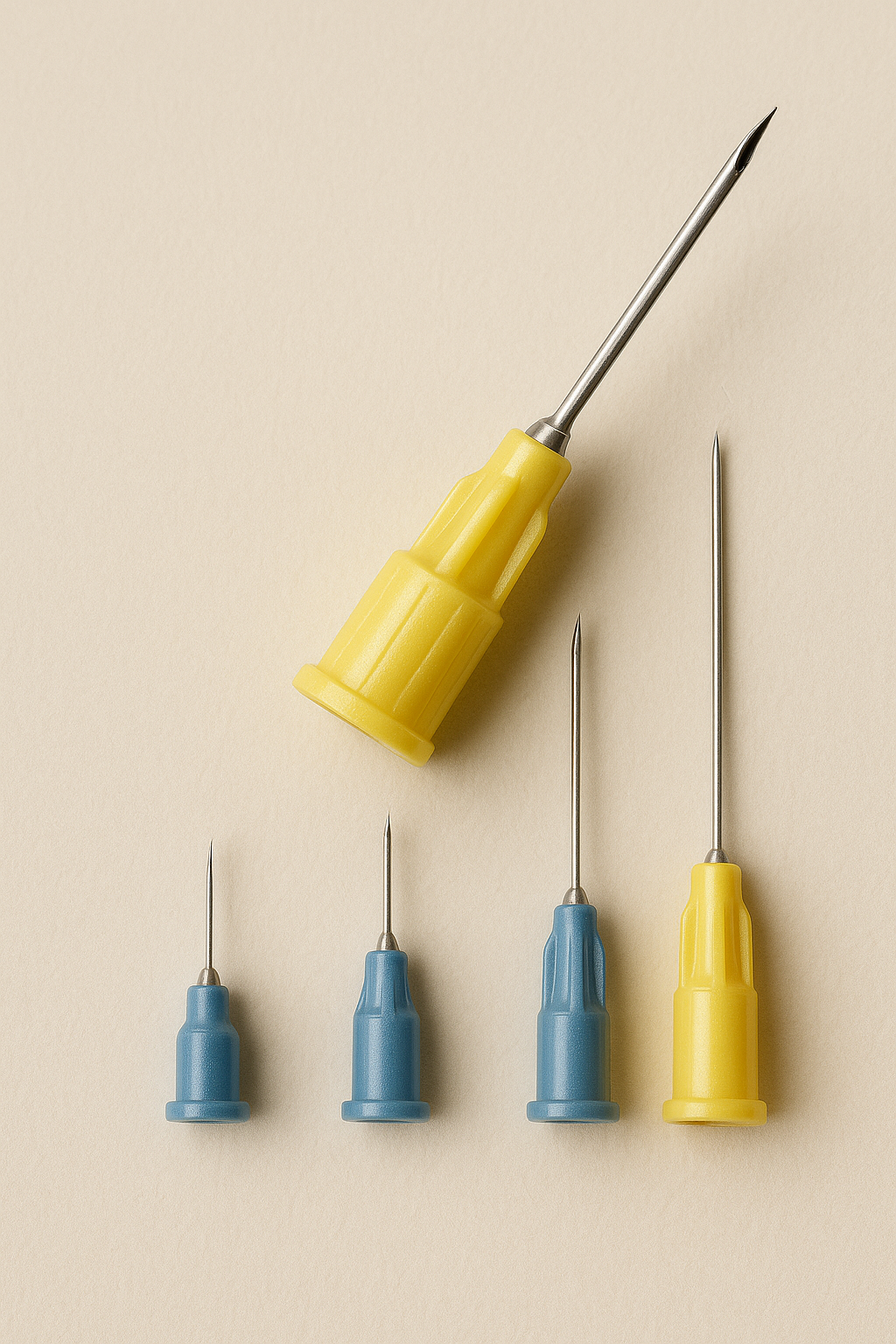Delivering effective and comfortable local anesthesia is a critical part of modern dentistry. Selecting the right needle ensures patient comfort, precision, and safety during procedures. Among the most commonly used are 27-gauge and 30-gauge disposable dental needles, available in extra short, short, and long lengths. Each type is designed for specific clinical applications.
This guide provides a detailed overview of their features, differences, and best practices for optimal use.
What Are Disposable Dental Needles?
Disposable dental needles are sterile, single-use devices used to administer local anesthetic solutions. They are designed for safety, sharpness, and compatibility with dental syringes.
A typical dental needle consists of:
- Hub – attaches securely to the syringe
- Cannula (shaft) – the stainless-steel needle that penetrates soft tissue
- Bevel – the angled tip that allows smooth tissue entry
Modern needles are made of siliconized stainless steel for smoother insertion and reduced discomfort. Color-coded plastic hubs allow quick identification of gauge size and type.
Understanding Needle Gauge: 27G vs. 30G
The gauge (G) of a needle refers to its outer diameter. A higher gauge number means a thinner needle.
27G Needles
- Slightly thicker and more rigid, allowing better control and smoother aspiration.
- Less likely to bend or clog.
- Ideal for deeper injections such as inferior alveolar nerve blocks.
30G Needles
- Thinner and generally more comfortable for patients during insertion.
- Suitable for maxillary infiltrations, palatal, and intraligamentary injections.
- More delicate, so not ideal for deep or dense tissue areas.
Needle Lengths: Extra Short, Short, and Long
Dental needles come in multiple lengths to accommodate different injection techniques and anatomical locations.
| Needle Length | Approx. Length (mm) | Common Applications |
|---|---|---|
| Extra Short | 10–12 mm | Intraligamentary and intrapapillary injections |
| Short | 20–25 mm | Maxillary infiltrations and palatal injections |
| Long | 30–40 mm | Inferior alveolar and posterior superior alveolar nerve blocks |
Extra Short Needles
Used for precise, localized injections such as periodontal ligament (PDL) or intrapulpal anesthesia. They allow accurate delivery in confined areas.
Short Needles
Commonly used for maxillary infiltrations and palatal injections. They provide an ideal balance between reach and control while minimizing patient discomfort.
Long Needles
Designed for nerve block techniques that require deeper tissue penetration, such as inferior alveolar nerve blocks. The added length ensures accurate anesthetic placement.
Safety and Infection Control
Disposable dental needles are single-use only to prevent cross-contamination and maintain patient safety. Key features include:
- Pre-sterilized packaging (ethylene oxide sterilization)
- Silicone-coated shafts for smooth tissue penetration
- Secure Luer lock hubs for firm attachment to syringes
- Protective caps and sheaths to prevent accidental needle sticks
Always dispose of used needles in approved sharps containers immediately after use.
Selecting the Right Needle: Practical Considerations
- Match gauge and length to the procedure
- 30G short for infiltrations and palatal areas
- 27G long for mandibular or nerve block injections
- Consider patient comfort
- Use finer gauges (30G) for anxious or pediatric patients.
- Check compatibility
- Ensure the hub design fits your syringe type.
- Maintain aseptic technique
- Never reuse needles and avoid two-handed recapping.
Common Needle Choices for Routine Dental Injections
| Injection Type | Recommended Needle | Gauge | Length |
|---|---|---|---|
| Infiltration | Standard | 30G | Short (20–25 mm) |
| Palatal | Fine | 30G | Short or Extra Short |
| Inferior Alveolar Block | Block | 27G | Long (35–40 mm) |
| Intraligamentary | PDL | 30G | Extra Short (10–12 mm) |
Conclusion
Selecting the correct disposable dental needle—whether 27G or 30G, extra short, short, or long—is essential for delivering effective anesthesia and maintaining patient comfort. Understanding the relationship between gauge, length, and clinical application allows for more precise, efficient, and comfortable anesthesia administration.

